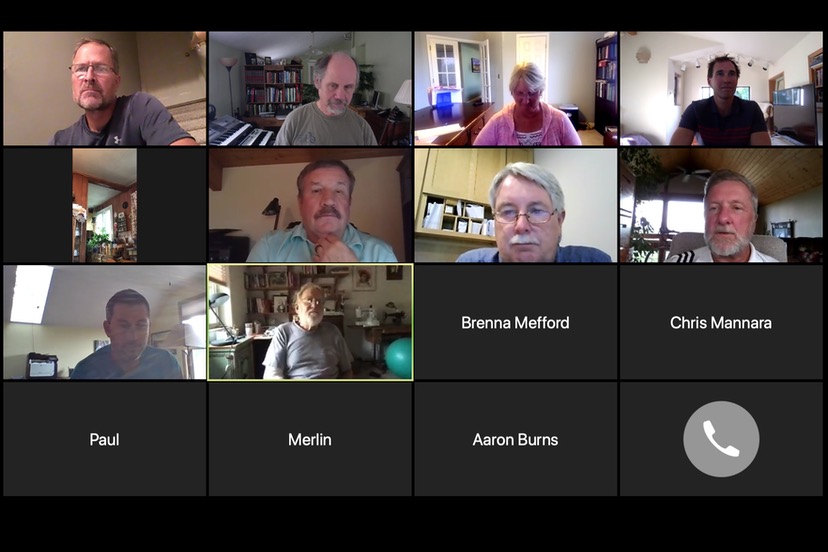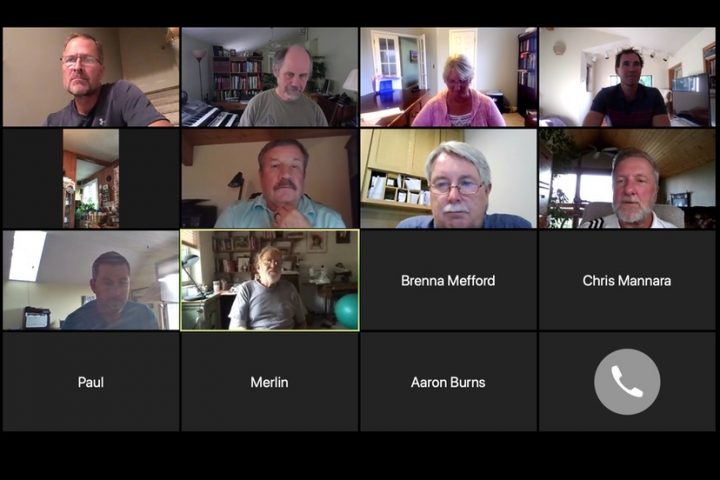I plan to write a bit more about Colorado’s attempts to address the issue of “water speculation”, as that problem rears its ugly head in the Grand Valley west of Grand Junction, and in other locations.
But first, I’d like to bring the story a bit closer to home, with a brief summary of the San Juan Water Conservancy District (SJWCD) board of directors’ September 21 meeting.
Disclosure: I currently serve on the San Juan Water Conservancy District board, but this essay does not necessarily reflect the opinions of the SJWCD board as a whole or of any other SJWCD board members.
Most of the meeting last Monday focused on a fictional (or perhaps I should say, ‘theoretical’) water reservoir that some people were planning, decades ago, near the headwaters of the West Fork of the San Juan River, north of Archuleta County in neighboring Mineral County. The names of the people who planned this reservoir have been lost to history (although a talented researcher might be able to discover their names, with enough time and effort.) We do know, however, that the plans were developed prior to 1967, because that’s when the Southwestern Water Conservation District obtained water rights for a rather large reservoir — 39,256 acre-feet — for industrial, municipal, recreational and irrigation uses.
The reservoir was never built, but the water right remains.
For purposes of comparison, our largest water reservoir in the Pagosa area is Stevens Reservoir, which contains about 1,730 acre-feet of water when full. 1,730 AF is about 50% more than the total amount of treated water Pagosa Area Water and Sanitation District (PAWSD) sold to its residential and commercial customers in 2019. The West Fork Reservoir was envisioned to be about 23 times the size of Stevens Reservoir.
In other words, the original reservoir, as planned in 1967, would have held about 35 times the amount of water PAWSD sold last year. As the years went by, the water right was reduced to 24,000 AF.
The location for the theoretical reservoir is smack dab in the middle of what is now the Bootjack Ranch.
The Southwestern Water Conservation District (SWWCD) oversees the development of water systems in the southwestern corner of Colorado, and for some reason, SWWCD gifted the water rights for the theoretical West Fork Reservoir to San Juan Water Conservancy District — no one remembers exactly when.
The gift horse came with a catch, however. Because the reservoir was still only theoretical, the water rights were classified as “conditional.” A conditional water right must be defended in water court every six years or so, or else it is considered abandoned. The process of defending your still-theoretical water right is called ‘diligence’, and it involves convincing the judge that you still need the reservoir, that you still intend to build the reservoir someday, and also that you can afford to build it someday.
Colorado is full of attorneys who live very comfortably off fees charged for handling diligence cases. If the water right happens to be held by a government agency, the taxpayers foot the bill.
A couple of curious decisions were made recently, regrading this theoretical West Fork reservoir.
In 2009, PAWSD and SJWCD and their attorneys had plans for a different reservoir — the Dry Gulch Reservoir — rejected by the Colorado Supreme Court, in a case brought by Trout Unlimited. Following that decision, PAWSD and SJWCD negotiated a settlement with Trout Unlimited, and part of the settlement agreement stipulates that SJWCD will abandon the West Fork Reservoir water rights if that reservoir is not completed prior to the construction of the Dry Gulch Reservoir.
Then, in 2014, SJWCD’s attorneys negotiated a settlement with Bootjack Ranch, agreeing to find a totally new location for the West Fork Reservoir, somewhere other than the middle of Bootjack Ranch. And the new location must be found by June 2021, or else the water right is considered abandoned.
Why SJWCD would agree to such a stipulation is unclear to everyone currently serving on the SJWCD Board. But there it is.
The current SJWCD Board, however, are the ones responsible for deciding what, exactly, to do with this theoretical reservoir that has no place to be. And we have only a few months to make that decision.
How to proceed?
From my perspective (and speaking only for myself and not the SJWCD Board) a plan to build a 39,256 AF reservoir in Mineral County — or even the downsized 24,000 AF reservoir — dates from a time, long ago, when, practically speaking, the term “water speculation” did not exist. For the first century of statehood, Colorado judges had a tendency to decree somewhat fantastical water rights to anyone who asked.
In fact, it’s only in the past few decades that the Colorado Supreme Court and the Colorado Division of Water Resources have stopped dealing out water rights like we had an unlimited supply of water. Because, in fact, we don’t have an unlimited supply of water. And because all water in Colorado belongs to the public, and must be used wisely for ‘beneficial uses’, our courts and water districts and agricultural associations are slowly coming to the realization that “water speculation” is a very real problem. And could get worse.
On Monday, the SJWCD Board met (via Zoom) with a prominent water consultant named Erin Wilson, of Lakewood, Colorado-based Wilson Water Group. Quite a few people attended the meeting — more than normal — which made for a lively discussion.
As mentioned, the discussion was meant to answer the question: how can the Wilson Water Group best assist the SJWCD Board in dealing with a reservoir gift horse that we — the current board — never asked for, but that we inherited along with a somewhat crazy requirement that we find, by June 2021, a new home for a huge reservoir that we have no obvious financial means to construct.


